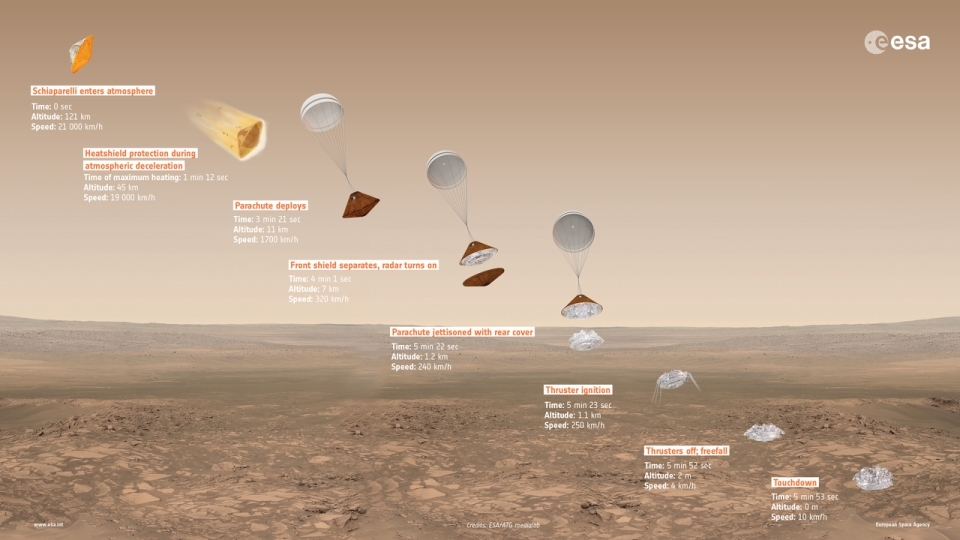The ExoMars mission reached the Red Planet, the GTO went into orbit, the status of the descent module is unknown
Today, October 19, 2016, the Trace Gas Orbiter and Sciaparelli , launched under the joint program of the European Space Agency (ESA) and the Russian state corporation Roscosmos, reached the Red Planet.
At 16:15 Moscow time (15:15 CEST), the Trace Gas Orbiter module turned on the engine for braking, maneuvering around Mars and going into orbit with a further landing of the automatic station Schiaparelli. TGO confirmed its successful awakening at 4:43 pm GMT, its weak signal was received by the Giant Metrewave Radio Telescope (GMRT) near Pune, India. At 19:35, Moscow time, the MCC reported that the satellite had successfully entered the orbit of Mars and received a clear signal.
The ExoMars mission started on March 14, 2016 from the Baikonur cosmodrome. Two spacecraft were launched into space: an artificial satellite of Mars, which will conduct work on exploring the planet from its orbit, and the Schiaparelli descent module to demonstrate and test landing on the surface of Mars. In addition, Schiaparelli will be engaged in the search for life and other research . Both devices came to the planet at the appointed time - October 19, the flight took place in the normal mode.
Landing practice is one of the most important moments of the ExoMars mission. The atmosphere of Mars is very rarefied, but this will not prevent any apparatus from burning in it if a braking maneuver about its upper layers is not performed. Before landing, the Schiaparelli had to reduce its speed from 21,000 km / h to 1,700 km / h, and parachutes would open at an altitude of about 11 km. At the very surface of Mars, at a speed of about 250 km / h, the probe will be separated according to plan from the capsule and use its own jet engines.

Stages of landing Schiaparelli.
While there is no clear information about the fate of Schiaparelli. The ESA will be able to check the status of the device only after passing over the Mars Reconnaissance Orbiter landing site.- another artificial satellite of Mars, launched in 2005 by NASA. Receiving data on the status of Schiaparelli is expected only tomorrow, October 20th.
This is not the last launch of the ExoMars mission. Another flight is scheduled for 2020. The second time, scientists will launch a migration module and a payload in the form of an automatic Martian station (surface platform) and a rover.
